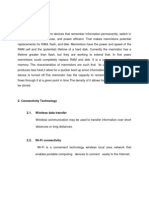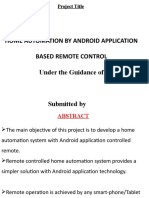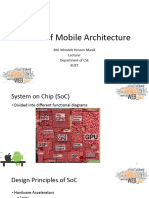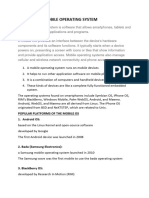0% found this document useful (0 votes)
32 views1 pageHardware Components of Mobile Operating System
The document outlines the key hardware components that a mobile operating system interacts with, including the CPU, RAM, storage, display, connectivity components, sensors, camera, audio components, and battery. It emphasizes the OS's role in managing these components to ensure efficient operation and user interaction. Overall, the mobile OS serves as a crucial intermediary between software applications and hardware, facilitating their seamless collaboration.
Uploaded by
sakurachan291229Copyright
© © All Rights Reserved
We take content rights seriously. If you suspect this is your content, claim it here.
Available Formats
Download as PDF, TXT or read online on Scribd
0% found this document useful (0 votes)
32 views1 pageHardware Components of Mobile Operating System
The document outlines the key hardware components that a mobile operating system interacts with, including the CPU, RAM, storage, display, connectivity components, sensors, camera, audio components, and battery. It emphasizes the OS's role in managing these components to ensure efficient operation and user interaction. Overall, the mobile OS serves as a crucial intermediary between software applications and hardware, facilitating their seamless collaboration.
Uploaded by
sakurachan291229Copyright
© © All Rights Reserved
We take content rights seriously. If you suspect this is your content, claim it here.
Available Formats
Download as PDF, TXT or read online on Scribd
/ 1


























































